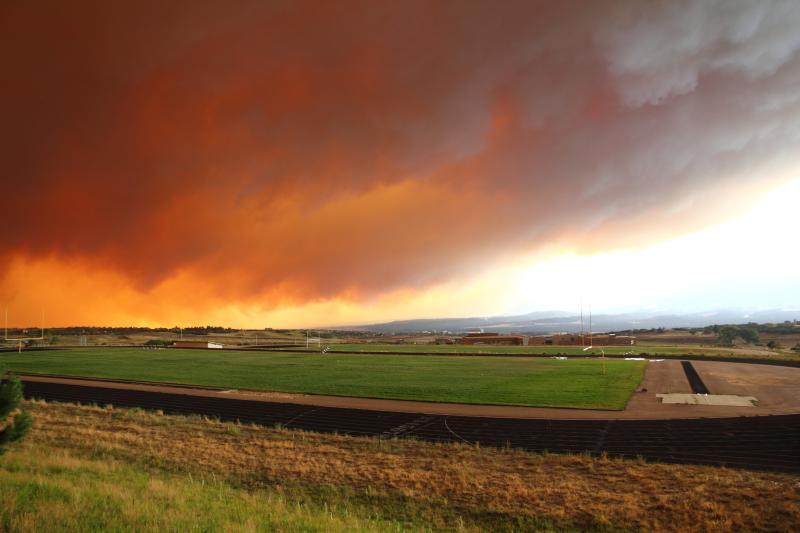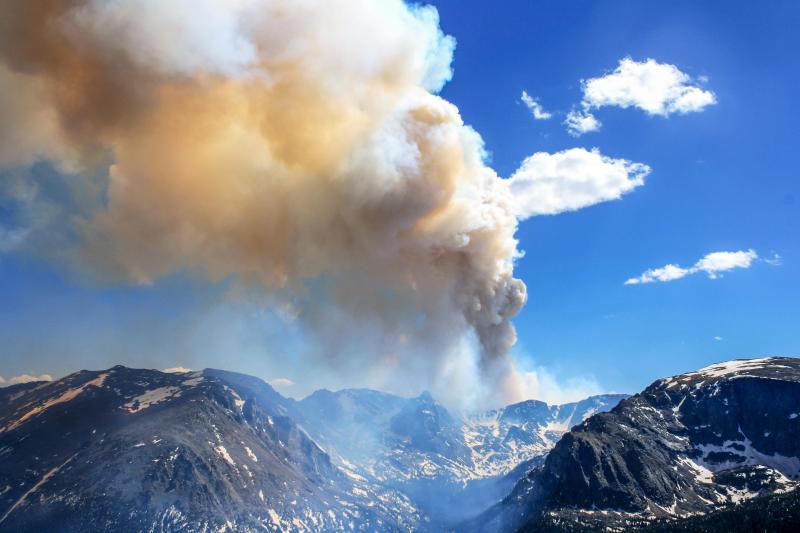Health and safety information after wildfire
Safe cleanup of wildfire ash
Ash that has been deposited on indoor and outdoor surfaces in areas near the recent wildfire is relatively nontoxic and is similar to ash that might be found in your fireplace; however, all ash contains small amounts of cancer-causing chemicals.
- Ash may irritate the skin, especially those with sensitive skin.
- If inhaled can irritate the nose and throat and cause coughing.
- Can also trigger asthmatic attacks.
To avoid possible health issues
- Do not allow children to play in the burn debris or ash areas.
- Wash ash from toys before allowing children to play with them.
- Wash ash off of household pets.
- When cleaning ash, avoid skin contact and wear protective clothing.
- gloves
- long-sleeved shirts
- long pants
- If ash does get on your skin, wash it off as soon as possible.
- If you have a vegetable garden or fruit trees, wash the fruit or vegetables thoroughly before eating them.
- Do not consume anything exposed to burn debris or ash.
- food
- beverages
- medication
- Clean all utensils, glasses, and dishware before use
- Wash them in a strong detergent solution.
- Then soak them in a bleach solution for 15 minutes.
- One teaspoon of bleach per quart of water.
- You can also use the long dishwasher wash cycle as long as
- The dishwasher is debris-free.
- The water heats up to at least 140 ̊F.
- The dishwasher has a heated drying cycle.
Clean up
- Avoid stirring up or sifting through ash as much as you can.
- Avoid actions that kick ash particles up into the air, such as dry sweeping.
- Before sweeping indoor and outdoor hard surfaces, mist them with water to keep the dust down.
- Follow with wet mopping.
- Use a damp cloth or wet mop on lightly dusted areas.
- When wetting ash, use as little water as possible.
- Do not use shop vacuums and other non-HEPA filter vacuums.
- They do not filter out small particles.
- Can blow particles into the air where they can be breathed in.
- HEPA filter vacuums can be used if available.
- Well-fitting dust masks may provide some protection during cleanup.
- Masks rated N-95 or P-100 are more effective.
- Simpler dust or surgical masks are not as effective in blocking particles.
- Many ash particles are larger than those found in smoke.
- Wearing a dust mask can significantly reduce (but not completely eliminate) the number of inhaled particles.
- In most cases, gently sweeping indoor and outdoor hard surfaces followed by wet mopping is the best way to clean up ash residue.
- Avoid washing ash into storm drains whenever possible.
- Collected ash may be disposed of in the regular trash.
- Ash may be stored in plastic bags or other containers to help prevent it from being disturbed.
Fact sheet from Environmental Protection Agency (EPA)
Wildland Fire Management - Protect Yourself from Ash Factsheet
Air quality
Wildfire smoke can cause health effects.
- lung irritation
- inflammation
- affect your immune system
- make you more susceptible to lung infections, including COVID-19
If you begin to notice health effects from smoke
- You are encouraged to take action to protect yourself.
- Reduce prolonged or heavy outdoor exertion.
For a smoke outlook by city, visit the Smoke Forecasts Outlooks website from Interagency Wildland Fire Air Quality Response Program (IWFAQRT).
Who is at risk
Some people are more at risk of harmful health effects from wildfire smoke than others.
- Children less than 18 years old
- Adults aged 65 years or older
- Pregnant women
- People with chronic health conditions like heart or lung disease, asthma, and diabetes.
- Outdoor workers
- Individuals experiencing homelessness or those who have limited access to medical care.
- People who are immunocompromised or taking drugs that suppress the immune system.
Strategies to reduce exposure to wildfire smoke
- Stay indoors as much as possible.
- Limit outdoor exercise or choose lower-intensity activities.
- Keep doors and windows tightly closed to decrease the amount of smoke that could enter.
- Create a clean room with filtered air at home.
- Use a do-it-yourself box fan filtration unit to help keep the air clean in the home.
- Use air conditioners, fans, and window shades to cool your indoor air space.
- Evaporative coolers, known as “swamp coolers,” should be turned off during periods of heavy smoke unless there is a heat emergency.
- These coolers rely on bringing outside air into the home and won’t cool effectively if the house is sealed to release air.
- Use caution while inside your vehicle.
- Keep windows and vents closed.
- Turn the air conditioning to “recirculate” mode.
- Avoid activities that create smoke or other air pollutants to decrease indoor particle levels, including:
- smoking cigarettes, pipes, and cigars
- spraying aerosol products
- frying or broiling food
- burning candles or incense
- vacuuming - unless you use a vacuum with a HEPA filter
Preparation is Key
Recommendations if you are at risk for smoke exposure.
- Maintain nonperishable groceries that do not require cooking.
- People with chronic diseases should
- Check with their healthcare provider about precautions ahead of smoke events.
- Have an adequate supply of medication available.
- Have a written asthma action plan if they experience asthma.
Visit the Air Quality Conditions page on the Mesa County Public Health Department website.


